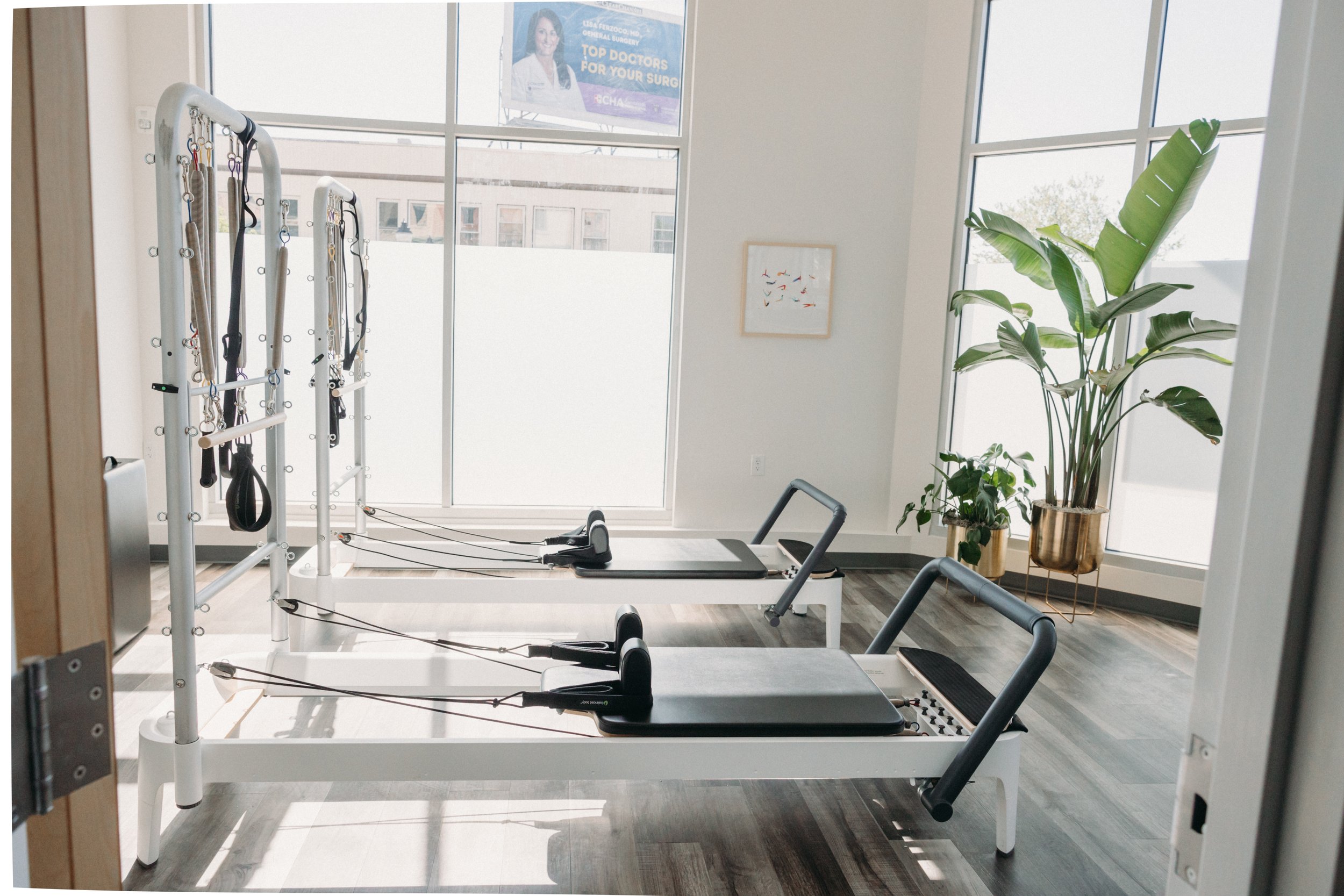5 Surprising Facts About Reformer Pilates (You Probably Didn’t Know)
From your favorite PTs and Pilates nerds 🤓
Reformer Pilates might look like a fancy machine workout, but it’s so much more than sleek springs and smooth glides. Whether you're new to the Reformer or a seasoned pro, these five facts just might change how you see it:
1. It was born in a hospital 🏥
Joseph Pilates invented the first version of the Reformer by rigging hospital beds with springs to help injured soldiers recover during World War I. From the beginning, it’s been about rehab, smart movement, and functional recovery — not just aesthetics.
2. Springs are about control, not strength 🌀
Think heavier springs mean a harder workout? Think again. Lighter springs require more stabilization and control, which means your deep core and tiny postural muscles are working overtime. It's not cheating — it's brilliant biomechanics. Check out this reel for a full body workout we designed on just a blue 🔵 spring 💪🏻.
3. Stabilizers take center stage ⚖️
Reformer Pilates doesn’t just target the big, showy muscles — it zeroes in on the stabilizers, those smaller, behind-the-scenes muscles that keep your joints supported and your body aligned. Think deep core muscles like the transversus abdominis, spine stabilizers like the multifidus, and hip and shoulder stabilizers like the gluteus medius and rotator cuff group.
These muscles are key for balance, coordination, and injury prevention — but most traditional workouts tend to overlook them. On the Reformer, the unstable surface and spring resistance require constant engagement from your stabilizers to stay in control. The payoff? Better posture, stronger joints, and a body that moves with more precision and ease, both inside the studio and in everyday life. That’s why it’s a game-changer for long-term strength and joint health.
4. It’s not just for rehab — it’s for peak performance 🏃♀️⚡️
Yes, it’s great for injury recovery — but Reformer Pilates also sharpens movement patterns, boosts neuromuscular control, and enhances overall efficiency. From pro athletes to weekend warriors, everyone moves better with Pilates.
5. Your fascia LOVES it ✨
That glide-y, open, lengthened feeling after class? That’s your fascia — the connective tissue that supports and surrounds your muscles — getting hydrated and mobile through spring-loaded movement. Happy fascia = happy body.
Want to experience the Reformer for yourself? Book a program or set up a free consultation call with one of our expert instructors and see what your body’s been missing.




